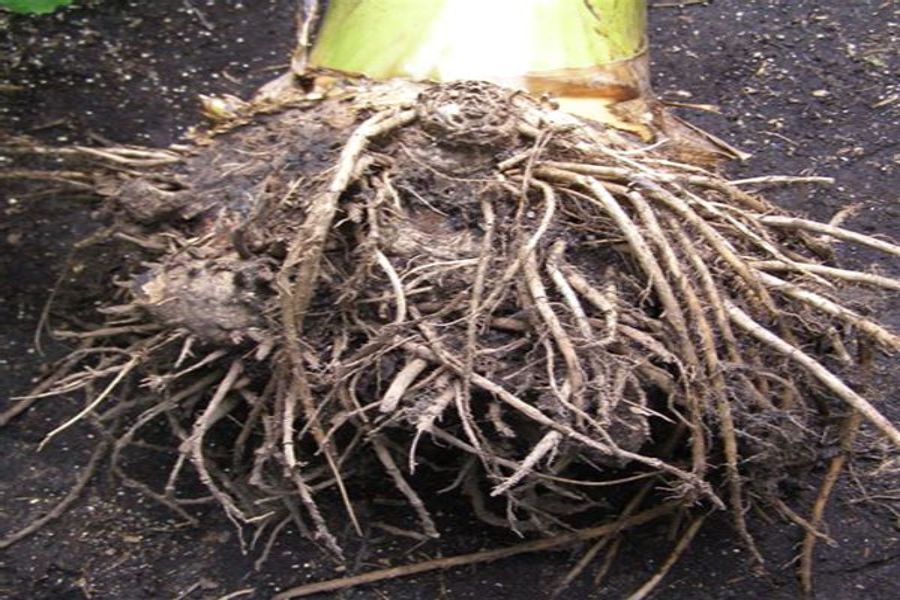The root system of a banana plant plays a crucial role in nutrient absorption, stability, and overall plant health.
Structure of the Banana Root System
Banana plants have a fibrous root system that grows from a central underground stem called the corm. The root system consists of:
✔ Primary Roots – Thick roots that emerge directly from the corm.
✔ Secondary Roots – Smaller roots branching from the primary roots.
✔ Root Hairs – Tiny hair-like structures that absorb nutrients and water.
These roots spread horizontally and can reach 1.5 to 3 meters around the plant, with a depth of 75 cm to 150 cm in loose soil.
???? Functions & Importance of the Root System
✔ Water & Nutrient Absorption – Helps in efficient uptake of water and essential nutrients like Nitrogen (N), Phosphorus (P), and Potassium (K).
✔ Anchorage & Stability – The fibrous roots hold the banana plant firmly in the soil, preventing it from toppling due to strong winds.
✔ Soil Aeration & Health – The roots improve soil structure by allowing better air and moisture penetration.
✔ Sucker Production – The root system helps in producing new suckers (baby banana plants), ensuring continuous plant growth.
Factors Affecting Root Growth
✔ Soil Type – Loamy, well-drained soil is best for deep and healthy root growth.
✔ Irrigation – Proper watering ensures strong root development. Overwatering can cause root rot.
✔ Mulching – Helps retain soil moisture and encourages root expansion.
✔ Nutrient Management – Applying balanced fertilizers promotes deeper and stronger roots.
How to Improve Banana Root Health?
✔ Use Well-Drained Soil – Avoid waterlogging to prevent root diseases.
✔ Apply Organic Matter – Compost and farmyard manure strengthen root structure.
✔ Use Mycorrhizal Biofertilizers – Enhances nutrient absorption and plant resistance.
✔ Proper Spacing – Ensures roots get enough space to grow without competition.
